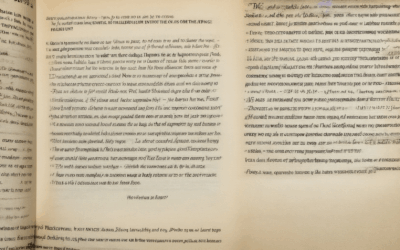Have you ever thought about the stories that shape who you are? Your personal storytelling journey is a powerful tool for transforming your experiences into meaningful narratives that resonate with others. Whether you’re crafting a personal narrative example or sharing a slice of your life, mastering the art of storytelling allows you to connect deeply with your audience while uncovering new dimensions of yourself. In this comprehensive guide, we’ll explore the essential elements of a personal journey, offering practical tips and strategies to help you craft compelling stories that inspire and engage. From understanding the stages of storytelling to learning the keys to creating a personal narrative, this guide will walk you through every step of your personal storytelling journey, ensuring your voice shines brightly.

The Five Stages of Storytelling
A compelling narrative is built upon a structured approach, consisting of distinct phases that guide the audience through the story’s progression. Below are the five essential stages of storytelling:
-
Exposition :
This is the foundation of the story, introducing the setting, characters, and the central conflict or theme. The exposition sets the stage, providing necessary background information and establishing the stakes. It answers questions like “Where is the story taking place?” and “What are the key elements driving the plot?” -
Rising Action :
After the exposition, the story begins to develop tension and momentum. This phase introduces complications, challenges, or obstacles that the protagonist must overcome. The rising action builds suspense, drawing the reader deeper into the narrative and creating curiosity about what happens next. -
Climax :
The climax represents the peak of the story, where the main conflict reaches its most intense point. Here, the protagonist faces their greatest challenge or makes a pivotal decision that shapes the rest of the narrative. The climax is often the turning point that resolves the central issue or reveals new information. -
Falling Action :
Following the climax, the story moves toward its conclusion. The falling action involves resolving remaining subplots, wrapping up loose ends, and showing the aftermath of the events. This phase answers questions like “How does the protagonist resolve their challenges?” and “What happens to the supporting characters?” -
Resolution :
The resolution concludes the story, providing closure and satisfying the audience. It confirms the outcome of the narrative, leaving the reader with a sense of completion. The resolution may offer lessons, inspire reflection, or leave a lasting impression depending on the story’s purpose and themes.
By mastering these stages, storytellers can craft engaging and impactful narratives that captivate audiences and effectively communicate their intended message.
What are the 5 Ps of storytelling?
The 5 Ps of storytelling are a framework used to ensure all essential elements of good storytelling are effectively communicated. These elements work together to create engaging, memorable, and impactful stories.
- P – People: The individuals who drive the story forward, whether they are protagonists, antagonists, or supporting characters. People give stories emotional depth and relatability.
- P – Places: The settings where the story unfolds. Places shape the tone, mood, and atmosphere of the narrative, helping to establish a unique world for the story to take place.
- P – Puzzles: The conflicts, challenges, or mysteries that the story resolves. Puzzles keep the audience engaged and curious about what will happen next.
- P – Patterns: The underlying themes, motifs, or recurring elements that tie the story together. Patterns help audiences understand the story’s purpose and meaning.
- P – Purpose: The central goal or message of the story. Purpose gives the narrative direction and ensures that the story communicates its intended impact to the audience.
These elements can be exemplified through a LEGO campaign, where the “People” might include a young builder named Finn, the “Places” could be various LEGO worlds, the “Puzzles” might involve solving building challenges, the “Patterns” could explore the theme of creativity, and the “Purpose” might be to inspire imagination in children worldwide.

The 5 Cs of Storytelling
Telling a great story involves understanding and mastering five key elements, commonly referred to as the 5 Cs of storytelling. These elements work together to create engaging, memorable, and impactful narratives.
- Character: The heart of any story is its protagonist. A well-developed character drives the plot, undergoes growth, and connects with the audience on an emotional level. Without a strong character, the story lacks depth and direction.
- Conflict: Every compelling story requires conflict. This can be an external struggle, such as a battle or quest, or an internal struggle, like personal doubt or transformation. Conflict creates tension and keeps the reader invested in the outcome.
- Context: Setting provides the foundation for your story. Whether it’s a historical timeframe, a specific location, or a particular social environment, the context shapes the characters’ actions and the story’s tone.
- Complication: To keep audiences engaged, stories often introduce complications. These can be unexpected twists, challenges, or obstacles that force characters to adapt and evolve. Complications add layers to the narrative and prevent predictability.
- Consequence: Every action in a story has an effect. Consequences determine the story’s trajectory and reveal the characters’ true nature. They provide closure and leave a lasting impression on the reader.
By focusing on these five elements, storytellers can craft stories that resonate emotionally and captivate audiences. Understanding the 5 Cs helps in creating narratives that are not only entertaining but also thought-provoking and meaningful.

What are the 4 Ps of storytelling?
The 4 Ps of storytelling is a framework used to analyze and create engaging narratives. Here’s a breakdown of each component:
P – Plot
The plot is the backbone of any story. It encompasses the sequence of events and conflicts that drive the narrative forward. A well-structured plot keeps readers engaged and maintains their interest throughout the story.
P – Protagonist
The protagonist is the central character around whom the story revolves. They undergo development, face challenges, and ultimately drive the plot forward. A relatable and multifaceted protagonist adds depth to the story.
P – Perspective
Point of view (POV) determines how the story is told. Whether it’s from the protagonist’s perspective, an omniscient narrator, or multiple perspectives, the choice of POV significantly impacts how the story unfolds and how readers connect with the characters.
P – Purpose
The purpose of a story goes beyond entertainment; it often serves to convey a message, inspire change, or explore themes. Understanding the underlying purpose helps in crafting stories that resonate on a deeper level.
By focusing on these four elements, storytellers can create compelling and impactful narratives that captivate audiences and leave a lasting impression.
The Four Cs of Storytelling
Storytelling is a powerful art form that captivates audiences and conveys meaningful messages. To craft an engaging narrative, it helps to understand the four essential elements known as the “4 Cs”:
- Character : The heart of any story lies in its characters. A well-defined protagonist undergoes growth and development throughout the plot, driving the narrative forward. Whether it’s a hero overcoming challenges or an antihero grappling with moral dilemmas, the character’s journey is what keeps readers invested.
- Conflict : Every compelling story requires a central conflict or struggle. This could be an external battle, such as a war or quest, or an internal struggle, like personal growth or self-discovery. The conflict creates tension and propels the story toward resolution.
- Cause : The cause is the underlying reason behind the conflict. It explains why the protagonist is facing this challenge. This could be a historical event, a personal vendetta, or a societal issue that the character must address.
- Consequence : The consequence is the outcome of the conflict. It determines how the character evolves and what lessons they take away. The consequences shape their future actions and influence the overall theme of the story.
By focusing on these four elements, storytellers can create stories that resonate emotionally with their audience, leaving lasting impressions and inspiring reflection.
For more tips on crafting effective stories, explore our website and discover how to master the art of storytelling.

What is the 5 Act Structure of Storytelling?
The 5 act structure is a proven method for crafting compelling stories, breaking them down into distinct phases that guide the audience through the narrative journey. This structure, rooted in classical literary theory, provides a clear roadmap for storytellers to organize their tales effectively.
Here’s a breakdown of each phase:
- Exposition
- Introduce characters, setting, and background information.
- Establish the central conflict or problem.
-
This sets the stage for the audience, providing necessary context before the action begins.
-
Rising Action
- Develop the story by introducing complications and challenges.
- Build tension through a series of events that escalate the stakes.
-
This phase prepares the audience for the climax by gradually increasing the drama.
-
Climax
- Reach the peak of the story where the central conflict reaches its highest point.
- Often involves a decisive moment or turning point that changes the direction of the plot.
-
This is where the protagonist faces their greatest challenge or makes a critical decision.
-
Falling Action
- After the climax, the story moves toward resolution.
- Resolve the central conflict or reveal new information.
-
This phase wraps up loose ends and brings closure to the narrative.
-
Resolution
- Conclude the story by resolving all major plot threads.
- Provide insight into the lasting impact of the events.
- This phase leaves the audience with a sense of completion and fulfillment.
By following this structure, writers can create stories that are engaging, emotionally resonant, and easy to follow. Whether in films, books, or scripts, the 5 act structure remains a cornerstone of effective storytelling.




0 Comments